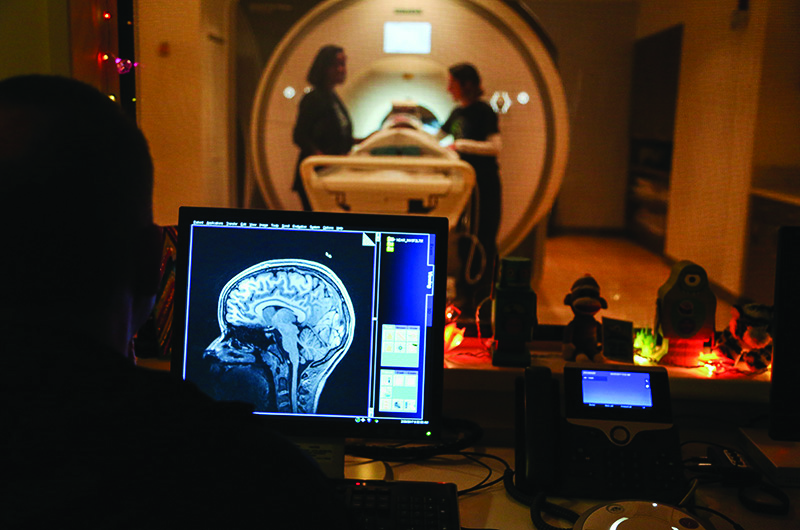
A Drexel University study shows that sections of the brain not often used for science are activated when students learn physics.
The study, which was published May 24 in Frontiers in ICT, used functional magnetic resonance imaging (fMRI) to determine which parts of the brain were the most active before doing physics problems and after taking a physics course.
“The neurobiological processes that underpin learning are complex and not always directly connected to what we think it means to learn,” Eric Brewe, associate professor in Drexel University’s College of Arts and Sciences and one of the lead authors of the study, said in a DrexelNow announcement.
The course taught a modeling instruction version of physics, which allows for students to learn creating models and applying the principles of physics to solve problems with those models. The study argues that this model building version of learning physics leads to increased organization of knowledge and better problem-solving abilities.
A sample size of 50 participants was used to determine whether brain activity changed while solving physics problems before and after taking the modeling instruction physics course. The participants, during an fMRI, answered simple physics questions before taking the course and then, again during an fMRI, answered questions of a similar difficulty after taking the course.
“These changes in brain activity may be related to more complex behavioral changes in how students reason through physics questions post- relative to pre-instruction,” Brewe told DrexelNow.
Before taking the course, students’ brains show a lot of activity in the areas associated with working memory, attention and problem solving. After the course, the fMRI picked up that the areas of the brain associated with episodic memory and self-referential thought were activated. With modeling instruction in physics, students are usually taught to imagine themselves in the situation or as the reference point in the model.
“One of the keys seemed to be an area of the brain, the dorsal lateral prefrontal cortex, which generates mental simulations. This suggests that learning physics is an imaginative process, which is not typically how people think of it,” Brewe said.
He chose physics for this study because mental modeling is heavily used in this subject, while it isn’t very often in most.
“Physics is a really good place to understand learning for two reasons. First, it deals with things that people have direct experience with, making formal classroom learning and informal understanding both relevant and sometimes aligned — and sometimes contrasted. Second, physics is based on laws, so there are absolutes that govern the way the body works,” Brewe said.
Brewe hopes to use the knowledge gained in this study to further understand how brain activity changes with higher levels of physics classes or with different study populations.
“I would like to follow up on the question of mental simulations in physics, to see where that shows up at different levels of physics learning and with different populations. But this whole study opens up many new areas of investigations and I’m pretty excited about how it will play out.”


